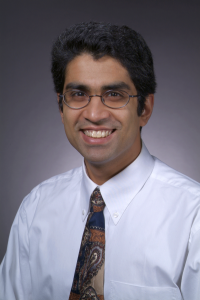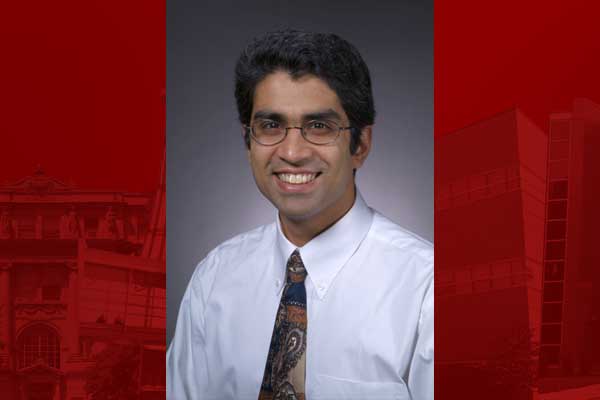A series of algorithms being developed by  Aditya Ramamoorthy could make using atomic force microscopes (AFMs) significantly faster when imaging and characterizing soft materials.
Aditya Ramamoorthy could make using atomic force microscopes (AFMs) significantly faster when imaging and characterizing soft materials.
Ramamoorthy, assistant professor of electrical and computer engineering, has support from a $413,000 National Science Foundation (NSF) CAREER award to work on the project “Joint topographic imaging and characterization using atomic force microscopy – a systems approach.”
The project will explore applying signal processing algorithms to data gathered from an AFM, which could speed up materials imaging and analysis without requiring a physical change to the instrument itself.
In use since the mid-80s to explore a wide assortment of matter, AFMs use a cantilever to examine material at an incredibly high resolution. As the cantilever interacts with a medium, it deflects based on atomic level forces. The AFM senses these forces to generate an understanding of the material’s properties and surface structure.
The instrument operates in different modes depending on the material being investigated. When evaluating soft materials, AFMs use what’s called the “tapping mode,” where the cantilever oscillates at a fixed frequency and gently taps the material. Minute changes in the cantilever trajectory are detected and interpreted to image and characterize the materials.
Building on a relatively recent AFM technique called multifrequency excitation, Ramamoorthy’s signal processing algorithms can characterize and image soft materials in a fraction of the time taken when conventional methods are used.
Employing several frequencies when an AFM’s cantilever interacts with a material during the tapping mode, multifrequency excitation allows for extra data corresponding to the various frequencies to be gathered in a single pass.
“Conventional tapping mode is a very slow method because you have to wait until oscillations from the previous feature die down before beginning the next measurement, and you are only gathering one piece of information at a time,” Ramamoorthy explained. “With multifrequency excitation and signal processing, we can potentially analyze and interpret several pieces of data from a material in only 30 minutes compared to the conventional tapping mode that might take six to eight hours.”
Finding the best manner in which to analyze the data will be one of the biggest challenges for Ramamoorthy. “We need to think about how to identify the correct model and algorithms, then things will start to fall into place,” he said. “It takes a certain amount of insight in terms of looking at experimental data, postulating a model, and iteratively refining the model and algorithms until satisfactory results are obtained.”
Ramamoorthy will be running several of his experiments in collaboration with Murti Salapaka, a professor of electrical and computer engineering at the University of Minnesota. Salapaka was at Iowa State when Ramamoorthy joined the university and introduced him to AFM research.
With five years to develop the signal processing algorithms, Ramamoorthy says he plans to explore their application across several disciplines because tapping mode AFM is so widely used. “For sure, we plan to use the technology to advance research in areas such as designing organic solar cells, characterizing polymers, and exploring biological materials,” he said.
He also plans to incorporate signal processing ideas into the electrical and computer engineering undergraduate and graduate coursework, as well as share his findings with the nanotechnology community via the online NSF resource Nanohub.
